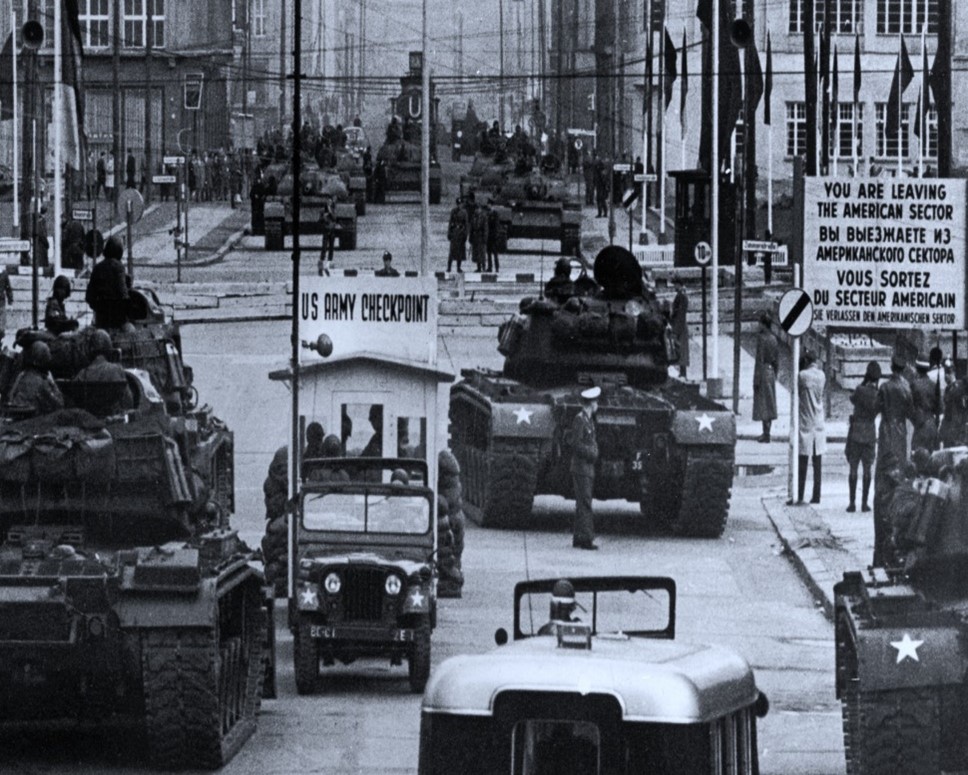Cold Warriors, Unsung Veterans

By Donna Reuss
Alexandria, VA – The term “veteran” generally calls to mind those who served in wartime: World War II, Korea, Vietnam, the Global War on Terrorism. However, while it was neither a formally declared war nor an armed conflict, many thousands of veterans served during what is known as the Cold War.
The Cold War is generally defined as the period between the end of World War II and the collapse of the Soviet Union. It was a time of economic competition, propaganda, and escalating political and military tensions between the United States and its allies and the Soviet bloc. The unlikely alliance of the two major powers, which had formed to fight Nazi Germany, shifted to rivalry as post-war Soviet expansion into many Eastern European countries fueled US fears of the spread of communism.
Author George Orwell first used the term Cold War in 1945 to describe a nuclear stalemate between “two or three monstrous super-states, each possessed of a weapon by which millions of people can be wiped out in a few seconds.” The specter of nuclear war loomed large as the ultimate threat during this time, as the two countries were embroiled in an arms race to develop atomic weapons, the use of which could have led to “mutually assured destruction.”
By 1947, containment became a defining element of US foreign policy. The Truman Doctrine promised US support to any country threatened by Soviet subversion. Further, the Marshall Plan provided billions in economic assistance to eliminate the political instability that could open the door for communist takeover of democratically elected governments.
Nor was the Cold War confined to Europe. Communists prevailed in the Chinese civil war, and colonial regimes in Africa and Latin America frequently became entangled in Cold War tensions as the superpowers competed to influence anti-colonial movements. Containment policy eventually informed the “domino theory,” which ultimately pushed the US into Korea, Vietnam, and other Cold War-related conflicts.
The Cold War officially ended in 1991. However, it influenced both military and intelligence advancement and diplomatic, social, cultural, and economic change within the US and worldwide.
Back to our Cold Warriors. A Cold War veteran is defined as an individual who served on active duty in the US Armed Forces for more than 365 days from September 2, 1945, to December 26, 1991 and was discharged or released under honorable conditions.
While not directly engaged militarily with the Soviet Union, veterans of this era stood ready around the clock for a potentially catastrophic war at a moment’s notice. They served at the Berlin Wall, Korea’s demilitarized zone, and in the jungles of Vietnam. They maintained missile defenses, patrolled the seas, and flew long missions around the Arctic Circle to deter Soviet aggression.
Additionally, intelligence-gathering and espionage were hallmarks of the era. Both sides employed spies and various intelligence-gathering methods to stay ahead of their adversaries. Movies with characters like James Bond conducting high-stakes missions, hidden recording devices, and gadgets like lipstick-tube guns mirrored real-life espionage. Data from aerial reconnaissance, such as U-2 spy plane missions, became a significant force multiplier for America.

There also are often-underappreciated consequences of the Cold War: unique health risks due to exposure to nuclear weapons, ionizing radiation, poisonous gas, and herbicides like Agent Orange. US service personnel performed occupation duties in Japan following the atomic bombings of Hiroshima and Nagasaki. Those involved with nuclear arms testing often were called “atomic vets.”
Yet, despite the heightened tensions and military readiness posture, no authorized service medal explicitly recognizes those who served in the Cold War. Bills in Congress, such as H.R.5757 – Cold War Service Medal Act, introduced in 2021, have gained little traction. Some insist the period is a state of political conflict, not war. Others think the medal would duplicate other service medals already authorized for inclusive periods. Some even feel it too costly to produce for the estimated 35 million personnel eligible to receive it.
However, eligible Cold War-era veterans can apply for a Cold War Recognition Certificate (CWRC). Authorized in 1998, the US Army is the program executive agent. The CWRC is intended to recognize the service of those who “served during gaps of ‘peace’ and never in a declared combat zone or small-scale operation.” It is available by request for free to all members of the armed forces and qualified federal government civilians who honorably served anytime from September 2, 1945, to December 26, 1991. Program details and application are at www.hrc.army.mil.
A Cold War Commemorative Medal and Ribbon also are available for purchase. These independently created items are not authorized for wear on a military uniform but may be worn on the uniform of former service members during military celebratory occasions and displayed in shadow boxes.
Interest in and the desire to acknowledge Cold War service appears to be on the rise. Several organizations have sprung up in the last few decades, including American Cold War Veterans and Cold War Veterans Association. Additionally, The Cold War Museum®, co-founded by Francis Gary Powers, Jr, son of the U-2 pilot shot down over the Soviet Union in 1960, is about an hour’s drive from Alexandria. On the grounds of the former Vint Hill Farms Station, the site was known as Monitoring Station No. 1, a classified US Army signals intelligence base during World War II and the Cold War.
______________________________________________________________________
If you are a veteran, veteran’s family member, or know a veteran who needs help, go to Virginia Board Veterans Services at www.dvs.virginia.gov/dvs; dss.virginia.gov/community/211.cgi; contact American Legion Post 24 Veteran Service Officer at [email protected]; or check out the Resources List on the Post 24 website: valegionpost24.com. For crisis intervention and suicide prevention services, dial 988 and Press 1, or text 838255 for the Veterans Crisis Line.
ICYMI: Wesley Housing Receives $3.75M Grant to Develop Affordable Housing



